What Is LLM Seeding And How It Boosts AI Visibility


LLM seeding is crucial for making your content visible to AI models like ChatGPT and Gemini. As AI-driven tools increasingly shape search results and recommendations, ensuring your content is cited by these models can significantly boost your visibility.
In this blog, we’ll break down what LLM seeding is, why it’s critical for AI visibility, and how you can leverage it to optimize your content for LLMs.
Key takeaways:
- LLM seeding ensures your content is cited by AI models like ChatGPT and Gemini, boosting your visibility in AI-driven search results.
- Strategic content placement across platforms like Reddit, Quora, and editorial microsites increases your chances of being referenced by LLMs.
- LLM seeding and generative engine optimization (GEO) work together to optimize content for AI models and improve content discoverability.
- Use structured content formats like comparison tables, FAQ-style content, and first-person reviews to enhance LLM visibility.
What is LLM Seeding and Why Does It Matter?
LLM seeding refers to the process of strategically placing your content in environments that increase its chances of being cited or used by large language models (LLMs) like ChatGPT or Gemini.
These models process massive amounts of data from various sources (websites, forums, articles, etc.) and use that information to generate responses, summaries, or even direct citations.
The idea behind LLM seeding is to ensure you are present in all these various formats to increase your chances of being cited by AI.
For example, look at how Writesonic’s blog is mentioned twice in this AI response by Claude when asked, “How can I choose the best AI visibility tool?”
Unlike traditional SEO strategies that chase rankings, LLM seeding focuses on embedding your brand into the memory and logic of AI systems that increasingly mediate information discovery.
And we were able to do this by ensuring the right brand presence on the right platforms for stronger AI citations.
Think of it as planting seeds in the vast databases that AI search engines use to generate responses. When someone asks a question related to your industry, you want your content to be the source the AI pulls from.
Why Does LLM Seeding Matter?
As AI models become a primary source of information for users, having your content recognized and referenced by these models becomes crucial for visibility.
The more your content appears in the training data of LLMs and live web searches, the better your chances are of being included in AI-generated search results, which are increasingly influencing the way information is presented online.
See how Writesonic is featured again, but this time in Google’s AI Overviews:
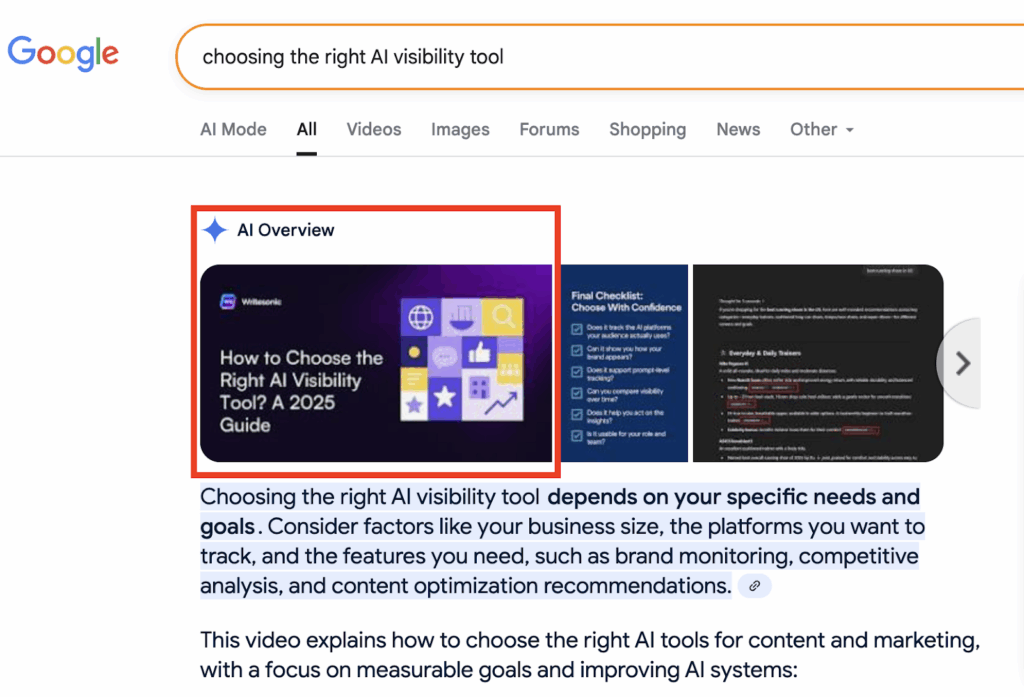
This means that Writesonic’s blog demonstrates a level of topical authority and has positioned itself for relevant platform mentions, allowing AI to cite them wherever possible.
For businesses and marketers, this means LLM seeding can directly impact how easily your brand or content shows up in AI search results.
How LLM Seeding Supports GEO (Generative Engine Optimization)
LLM seeding and generative engine optimization (GEO) may seem like distinct concepts, but they are interconnected and support each other in optimizing content for AI search.
Here’s how LLM seeding and GEO differ:
- LLM seeding focuses on getting your content into the data sets of large language models (LLMs) like ChatGPT or Gemini. It’s about placing your content on specific platforms that will be recognized and utilized by these models.
- Generative engine optimization, on the other hand, is about optimizing content for AI algorithms that generate answers, summaries, or recommendations. This includes ensuring that the content is structured, relevant, and aligned with the way LLMs retrieve and use data.
Without LLM seeding, your content might not even be part of the training data that powers AI models. Without GEO, the content might not be optimized in a way that makes it easily retrievable or relevant to the LLMs.
| Aspect | Traditional SEO | LLM Seeding | Generative Engine Optimization (GEO) |
| Focus | Ranking for SERPs (Google, Bing) | Getting content into LLM training data | Optimizing content for AI engines |
| Primary Goal | Increase visibility and ranking in traditional search engine results | Ensure LLMs cite and use your content as much as possible | Ensure content is relevant for AI-generated outputs |
| Techniques | Keyword optimization, link building, and content quality | Publish on various platforms like UGC forums, Substack, review sites, etc | Content structure, data relevance, topical authority, AI readability, technical structured data, etc |
| Metrics | Organic traffic, keyword rankings | Citations and mentions in AI responses | Visibility in AI-generated search results, LLM citations |
| Output | Organic clicks, rankings | AI-generated references | Featured in AI responses and recommendations |
In short, LLM seeding is specifically about which platforms to “seed” or “plant” your content in so it gets picked up by AI as much as possible.
GEO or answer engine optimization is about building topical authority and structuring content in such a way that it gets recognized by AI search crawlers. The end goal for both is to boost AI visibility.
💡Learn more about: What Is LLM Optimization and 12 Tips To Improve Your Brand Visibility
Where to Publish for Maximum LLM Seeding
1. Reddit, Quora, And Niche Forums
Reddit stands out as the second most-cited site in Google’s AI Overviews, with Quora taking the top position.
According to Writesonic’s proprietary data, we found that UGC content, such as Reddit, has a 62.38% chance of being cited when appearing in Google’s top 10 results and makes up 21.74% of all AI-generated citations.
This prominence exists because these platforms contain real, authentic, detailed Q&A content that precisely matches user queries.
In fact, you’ll notice that for many long-tail queries, Reddit is almost always ranking in Google AI Overview results:
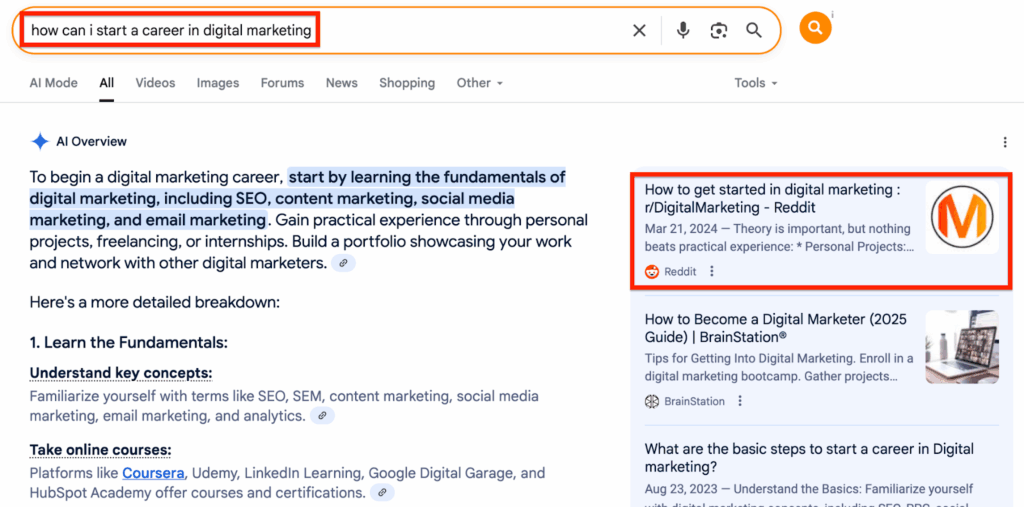
Here’s what you can do to increase your visibility and presence through Reddit:
- Participate regularly in relevant subreddits where your audience congregates.
- Provide structured and informative answers rather than promotional content.
- Use clear formatting with headers, bullets, and examples even in informal spaces.
Quora also offers similar visibility opportunities. The platform’s clean question-answer format makes it ideal for LLMs to extract relevant information. Niche industry forums like GitHub also deserve attention as they contain high-intent, expert discussions that LLMs value for specialized topics.
2. Medium, Substack, And LinkedIn Articles
Third-party publishing platforms are like LLM magnets due to their semantic structure and editorial quality.
Medium’s minimalist layout and clear organization make it exceptionally suitable for AI parsing. Its emphasis on readability and domain authority creates perfect conditions for content that LLMs can confidently cite.
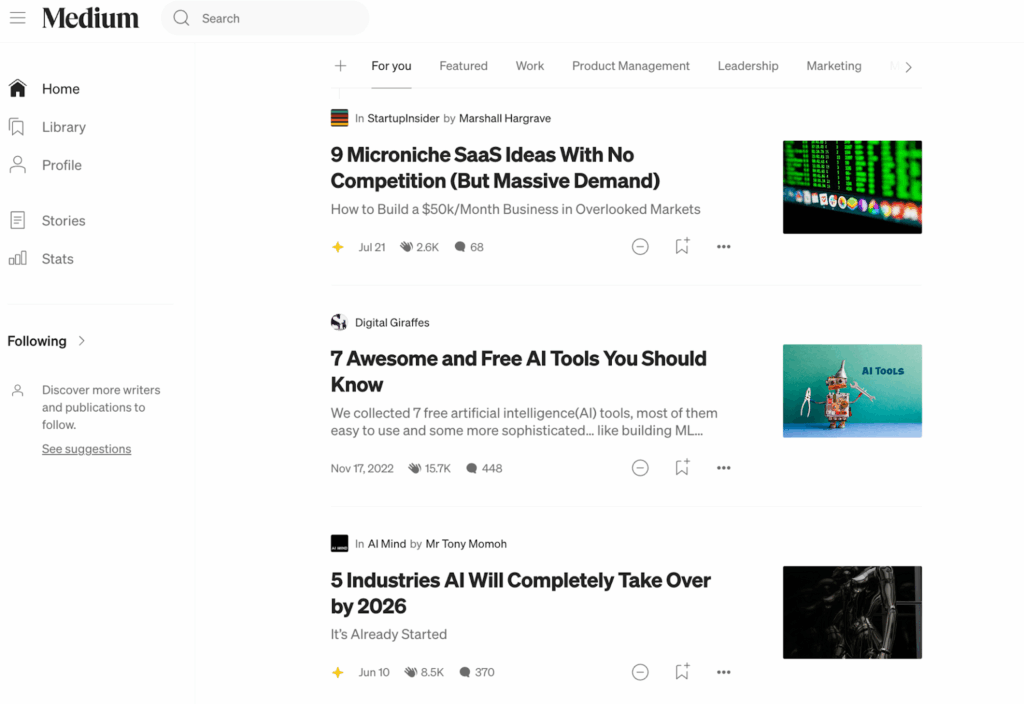
Substack is another publishing platform that has emerged with a focus on executives with substantive perspectives. Its focus on thought leadership makes it ideal for:
- Developing founder viewpoints that require depth.
- Challenging conventional industry thinking.
- Establishing ownership of ideas over time.
You can also try publishing LinkedIn articles and newsletters to verified professional profiles, adding credibility that LLMs recognize.

Unlike traditional corporate blogs, these platforms strip away clutter, prioritizing posts with strong structure, depth, and most importantly, authenticity—precisely what LLMs require for confident citation.
3. Review Platforms Like G2 And Capterra
Research shows that 100% of the tools mentioned in ChatGPT answers had reviews on Capterra, while 99% had reviews on G2.
But mere presence isn’t enough.
When it comes to comparison-based prompts on AI, like “best tools for email marketing” or “top-rated smartphones in 2025,” review platforms will most likely be cited. To ensure your position:
- Encourage users to provide detailed feedback, not just star ratings.
- Have them explain why they chose your product and how it solved their problem.
- Ask them to compare with other products, tools, or services they’ve used.
LLMs prioritize rich, contextual insights over simple badge counts. User reviews filled with real experiences become valuable training data, reflecting genuine value that helps to boost your visibility.
Apart from review platforms, you can also reach out to other popular publications and websites like Forbes or Zapier to get featured in one of their review blogs.
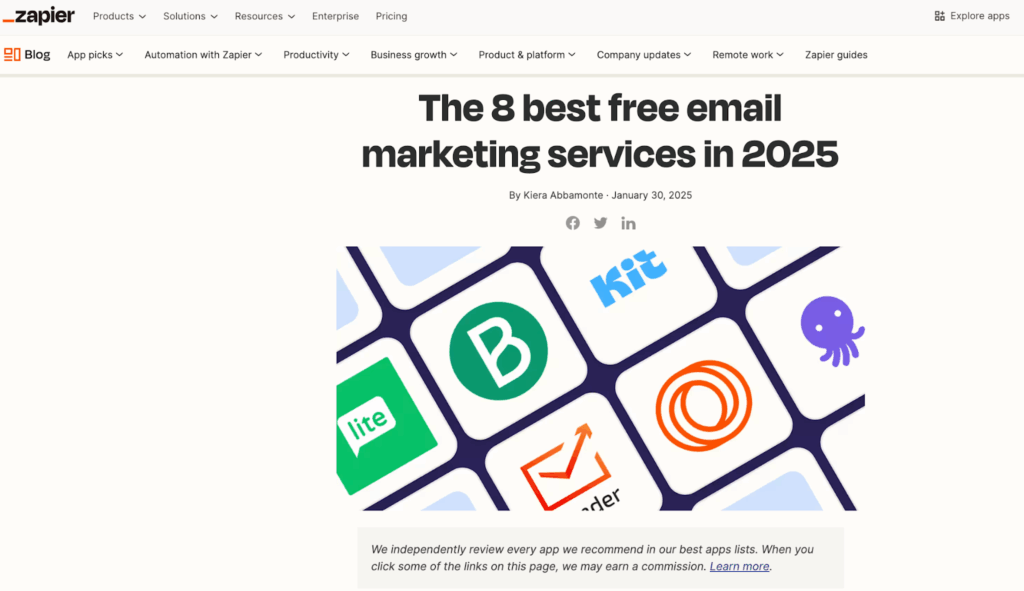
4. Editorial Microsites
Editorial microsites are niche, standalone websites created to provide in-depth, authoritative content on a specific topic.
Unlike broader company websites, these microsites focus on delivering valuable information to a targeted audience, often in the form of articles, research, or insights.
They are particularly effective for LLM seeding because they are more likely to be crawled and cited by large language models due to their specialized content and structure.
Website Grader by HubSpot provides actionable insights on website health, frequently referenced in SEO-related searches. There’s also My Creative Type by Adobe, which engages users with a quiz to determine their creative personality, offering personalized results that are referenced in discussions about creativity and design.
Publishing on these editorial microsites enhances your content’s visibility and chances of citation by LLMs, helping boost your brand presence on AI.
5. Guest Posting
Guest posting may sound like an old and outdated SEO tactic, but when done on high-authority platforms, it increases the likelihood of your content being picked up by LLMs. It also helps expand your reach and build credibility.
Plus, high-quality guest posts often include links to your content, boosting both SEO and LLM visibility.
To maximize your chances of AI citations through guest posting, focus on high-authority sites like Entrepreneur, HubSpot, or TechCrunch (depending on your industry niche).
6. Social Media Platforms Recognized By LLMs
While UGC platforms like Reddit and Quora play an important role in LLM seeding, social media platforms also significantly impact your chances of being cited by LLMs.
These platforms are crawled by AI models, especially when content drives meaningful engagement and discussions.
Platforms like LinkedIn and Twitter are constantly updated with high-engagement content. LLMs pull from real-time discussions, making these platforms a valuable source for fresh data.
As a professional network, LinkedIn articles and posts often get indexed by LLMs, especially when they engage with industry-specific conversations. Thought leadership content here can be cited by AI models, particularly in career and business-related queries.
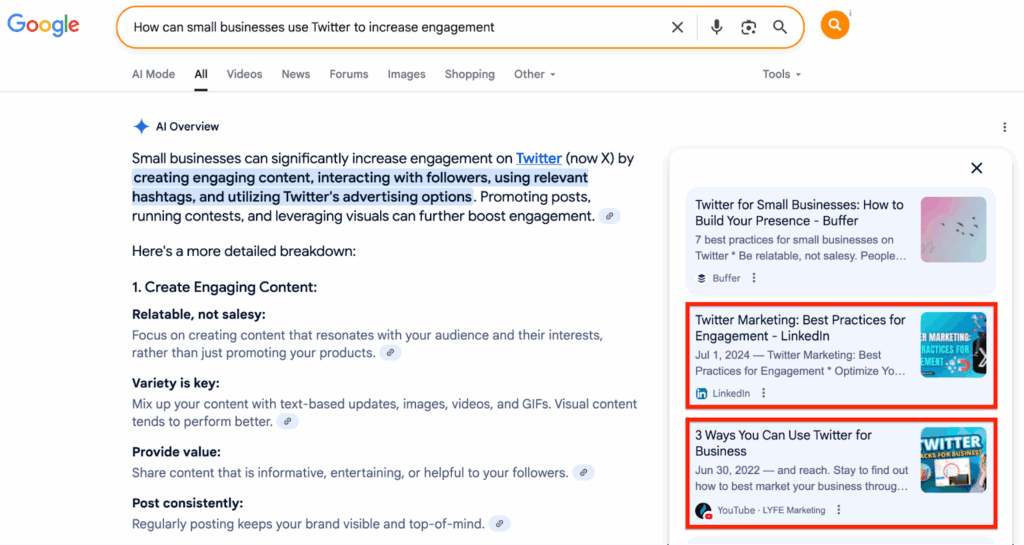
Known for its quick, real-time updates, Twitter discussions around trending topics are frequently referenced by LLMs. High-engagement tweets, especially those that address relevant industry issues, tend to be cited more often.
On platforms like Twitter, Instagram, and even YouTube, trends and viral content are often referenced by LLMs to answer questions or summarize popular topics. Content with a lot of interactions has a higher chance of being picked up.
💡Also read: 9 Key Factors That Affect AI Search Rankings
Best Content Formats for LLM Visibility
LLM seeding is not possible without strategically crafting content formats that are valuable, scannable, and AI-friendly.
The goal is to produce formats that are easy for large language models (LLMs) to crawl and cite when generating answers or summarizing queries.
1. Structured Content Blocks (e.g., Comparison Tables)
LLMs are more likely to pull structured data when generating content. Comparison tables are one of the best formats because they break down complex information into clear, digestible pieces. This allows LLMs to easily extract relevant facts and present them in response to user queries.
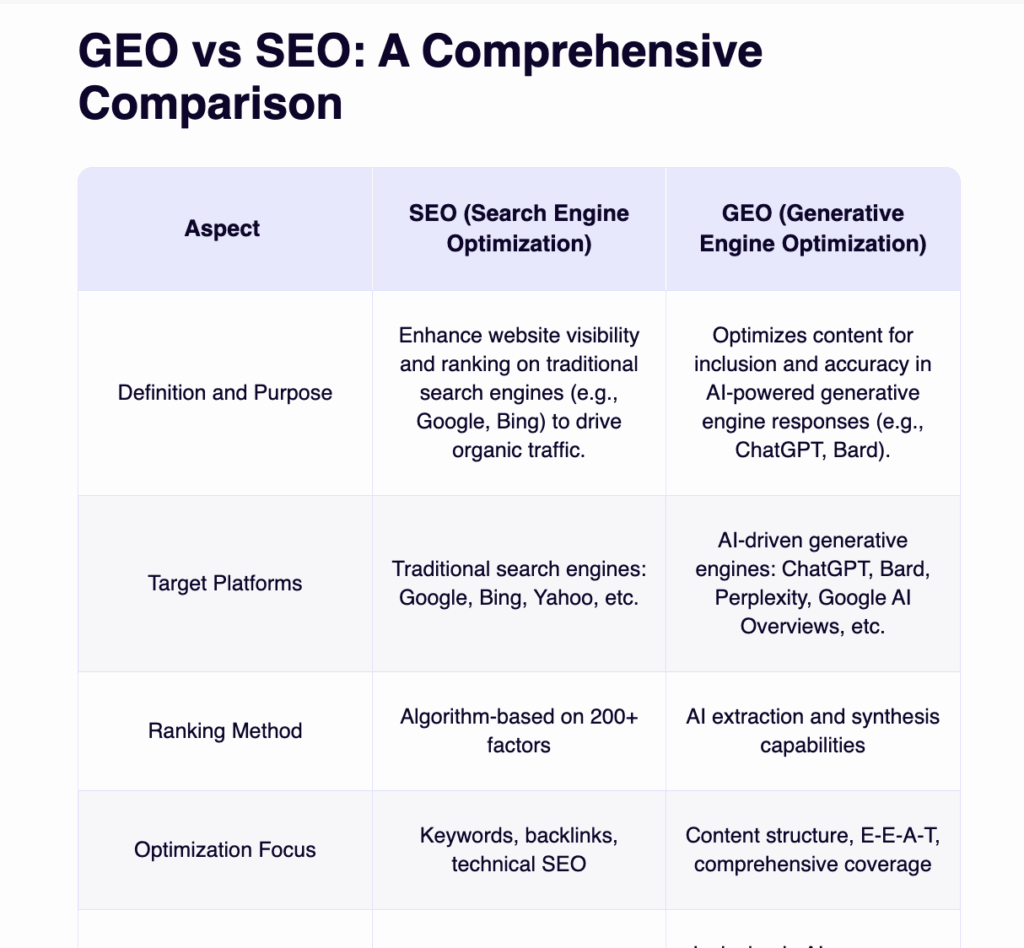
Keep the table straightforward and focused on key attributes that users will search for. For example, a comparison table of top AI interviewing tools featuring price, features, and user ratings will directly align with how LLMs process this kind of data.
2. First-Person Experiences with Data-Driven Insights
While LLMs value well-structured, factual content, they also favor real-world experiences. First-person reviews or case studies that combine personal experience with data-driven insights are more likely to be referenced by LLMs.
These types of pieces add context and authenticity, which LLMs often look for when generating user-specific recommendations.
You can showcase this through customer success stories on your website, case study blogs, and testimonials throughout your pages.
3. Q&A and FAQ Content
When LLMs generate answers, they often pull from FAQ-style content due to its straightforward nature. This content format provides direct, concise answers to specific user queries, making it a perfect match for LLMs looking for quick information.
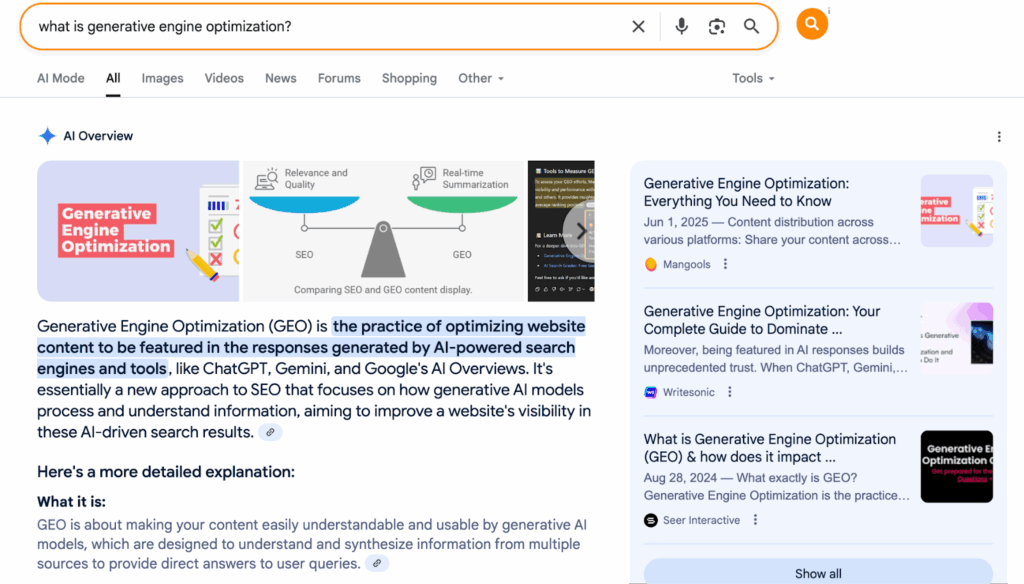
For blogs, don’t just list questions with answers. Structure the answers in a clear, conversational tone that mimics how a user would ask the question. Avoid overly technical language and keep the answers short and to the point.
5. Free Tools and Templates that Solve User Problems
Interactive content like free tools and templates not only attracts backlinks but also positions your content as a practical resource. LLMs often reference tools or templates because they provide immediate value to users.
To increase your chances of getting AI to cite your free tools, include step-by-step instructions and a relevant title that reflects potential AI prompts or search queries.
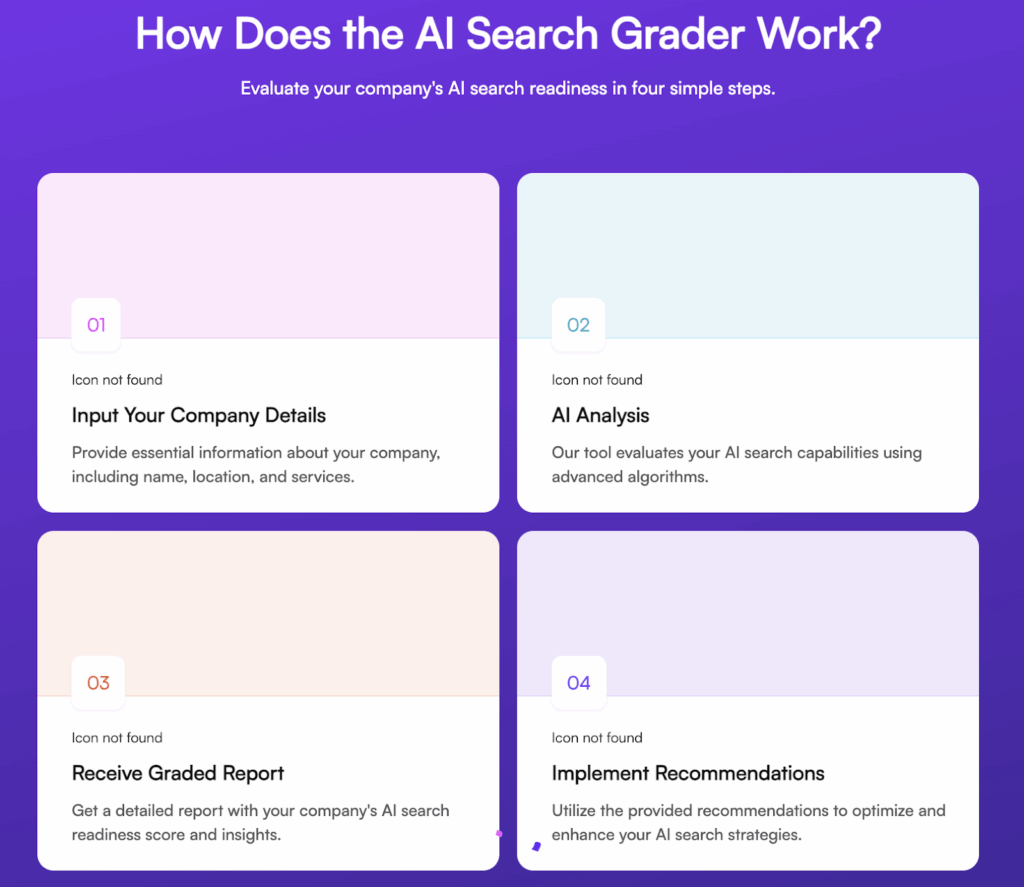
LLMs will more likely reference content that users engage with directly, especially if the resource is useful and widely shared.
How to Track and Measure LLM Seeding Success
Tracking the success of your LLM seeding efforts is key to understanding what’s working. The best way to do this is by monitoring AI citations, organic visibility, and engagement.
With Writesonic, you can easily track where and how often your content is referenced by LLMs like ChatGPT, Claude, Perplexity, and others.
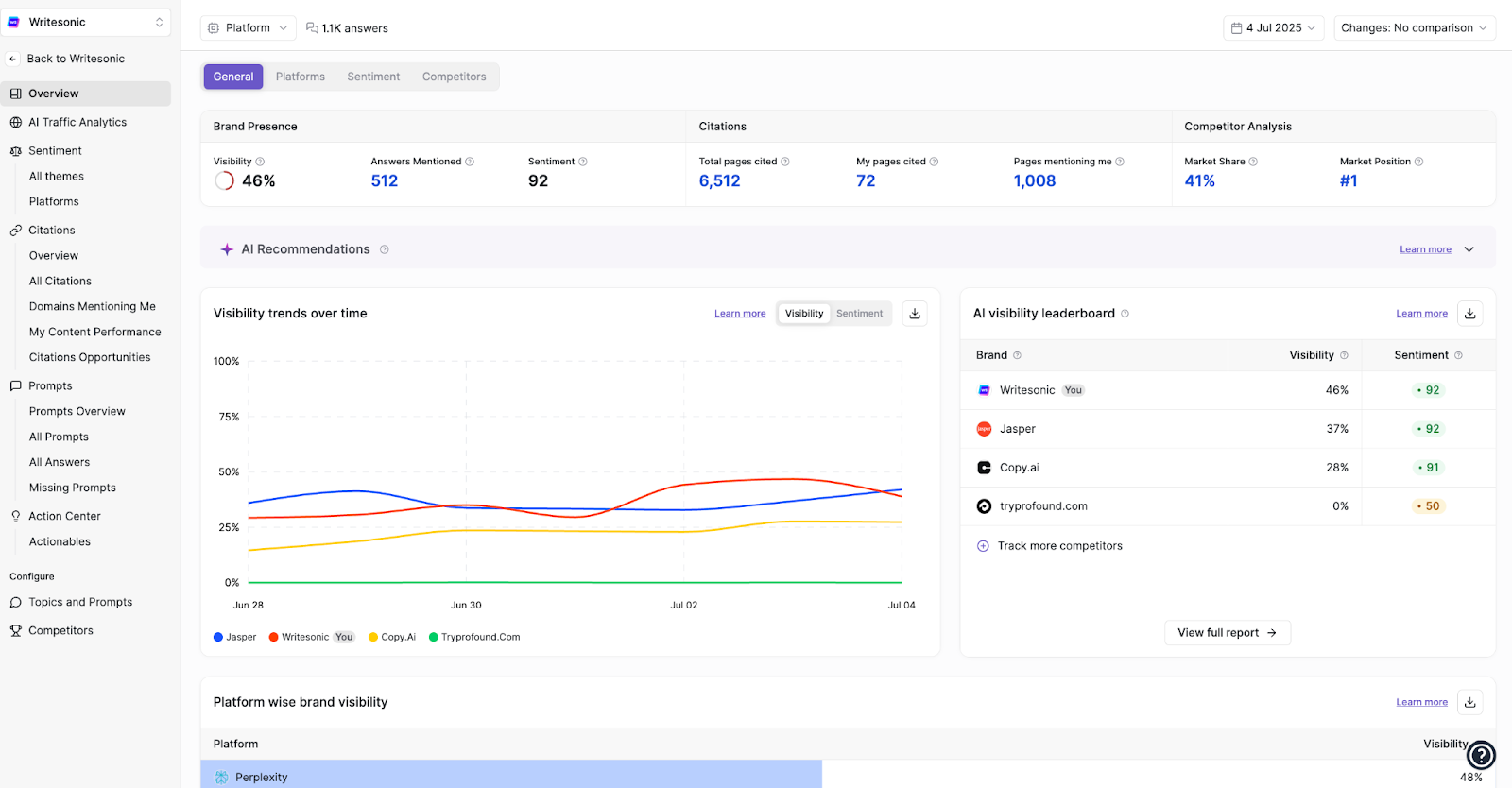
Writesonic lets you:
- Monitor AI-driven search results to see how your content gets cited in real prompts.
- Identify gaps and opportunities to adjust your content strategy for better AI-driven reach.
- Compare your AI search performance with industry competitors and monitor brand sentiment and overall visibility scores.
Want to know how your content is performing in AI-powered search? Start using Writesonic today and turn your LLM seeding efforts into measurable success.
FAQs
1. What is seeding in LLM?
Seeding in LLM involves strategically placing content on platforms or websites that are likely to be crawled and referenced by large language models (LLMs) like ChatGPT, Google Gemini, and others.
The goal is to ensure that your content is included in the training data of these models, increasing the chances of it being cited or used when the models generate AI-driven responses.
2. Why is LLM seeding important for SEO?
As AI models become a primary source of information for users, ensuring your content is included in their training data can directly impact how often your content is referenced in AI-generated search results. This boosts your digital presence beyond traditional search engines and taps into AI-powered platforms.
3. How do I know if my content is being seeded by LLMs?
You can track how your content is performing in AI-driven search results using tools like Writesonic, which monitors how often and where your content is being cited by AI models.
You can also run manual prompts across different tools like ChatGPT, Claude, Perplexity, and Gemini. As a best practice, use a private or incognito browser to avoid skewed results from past queries or personalization.









